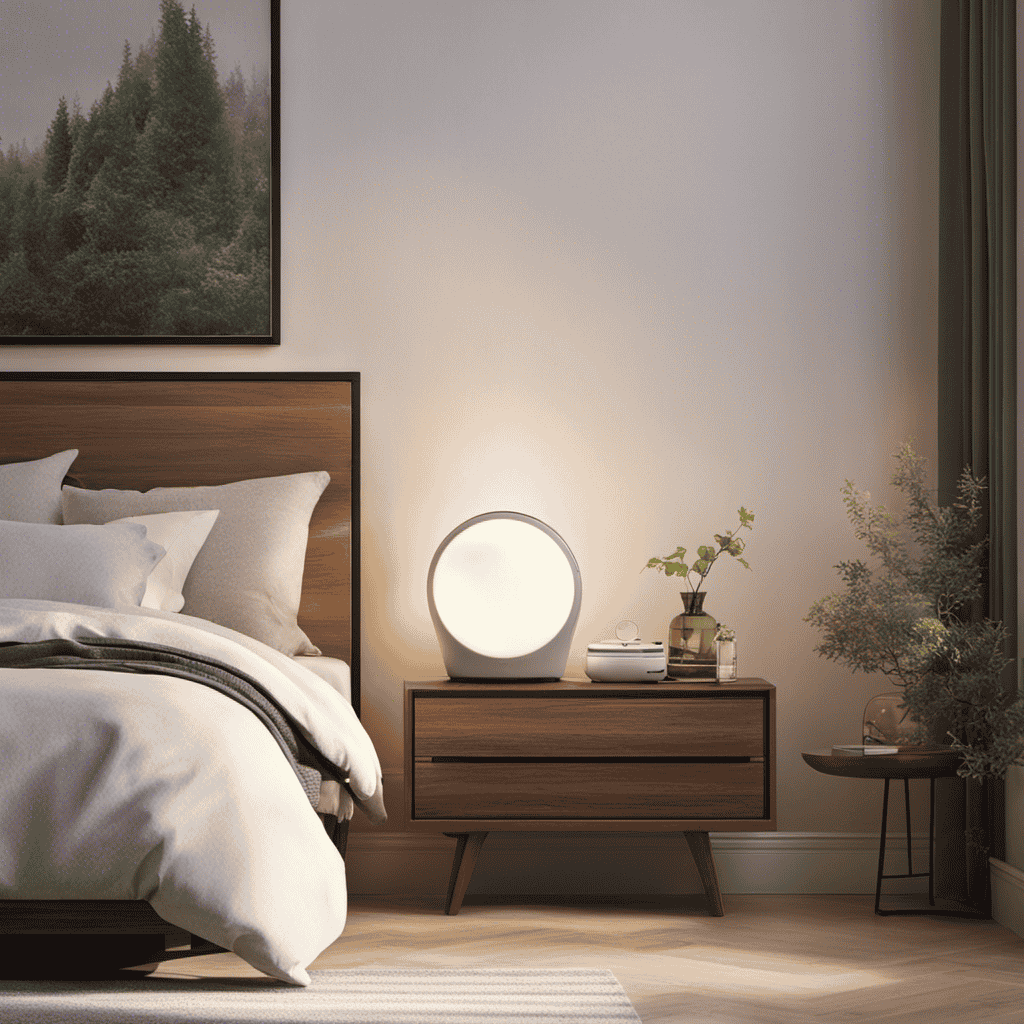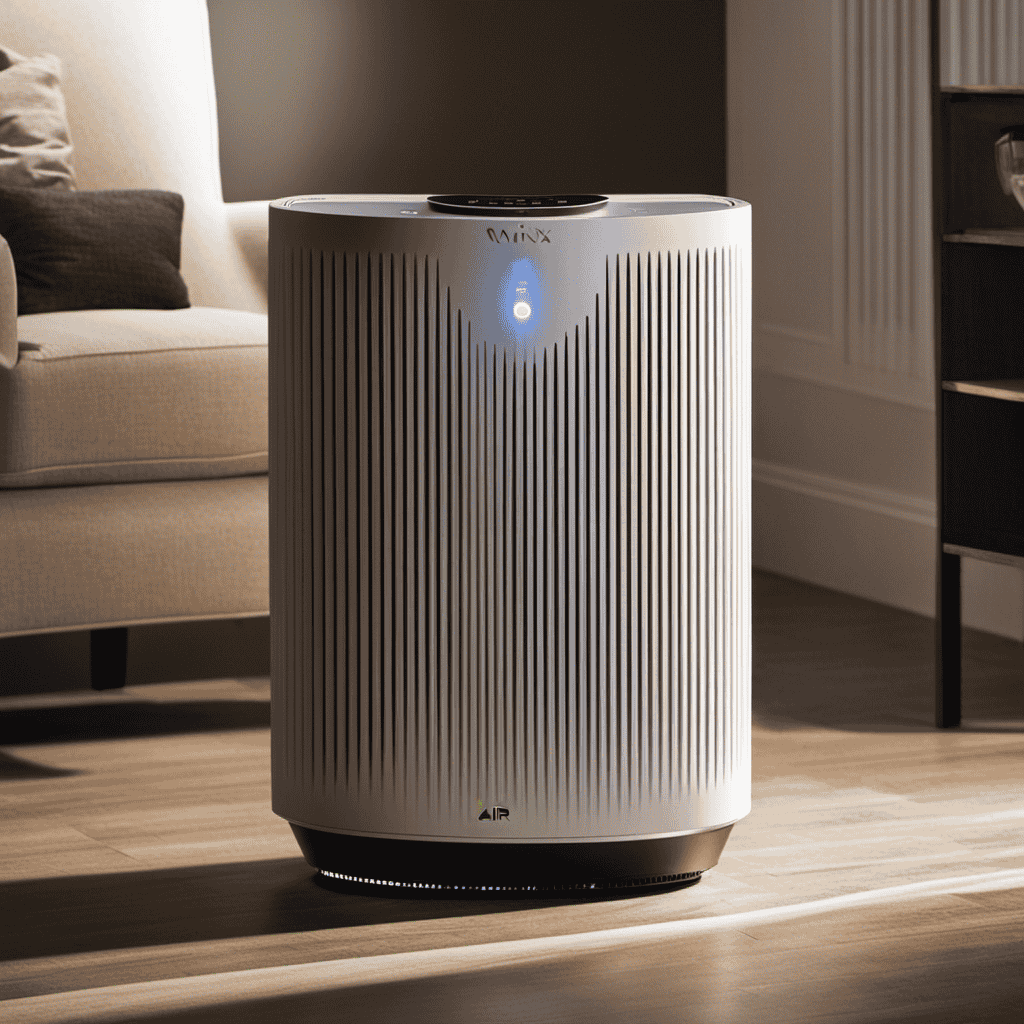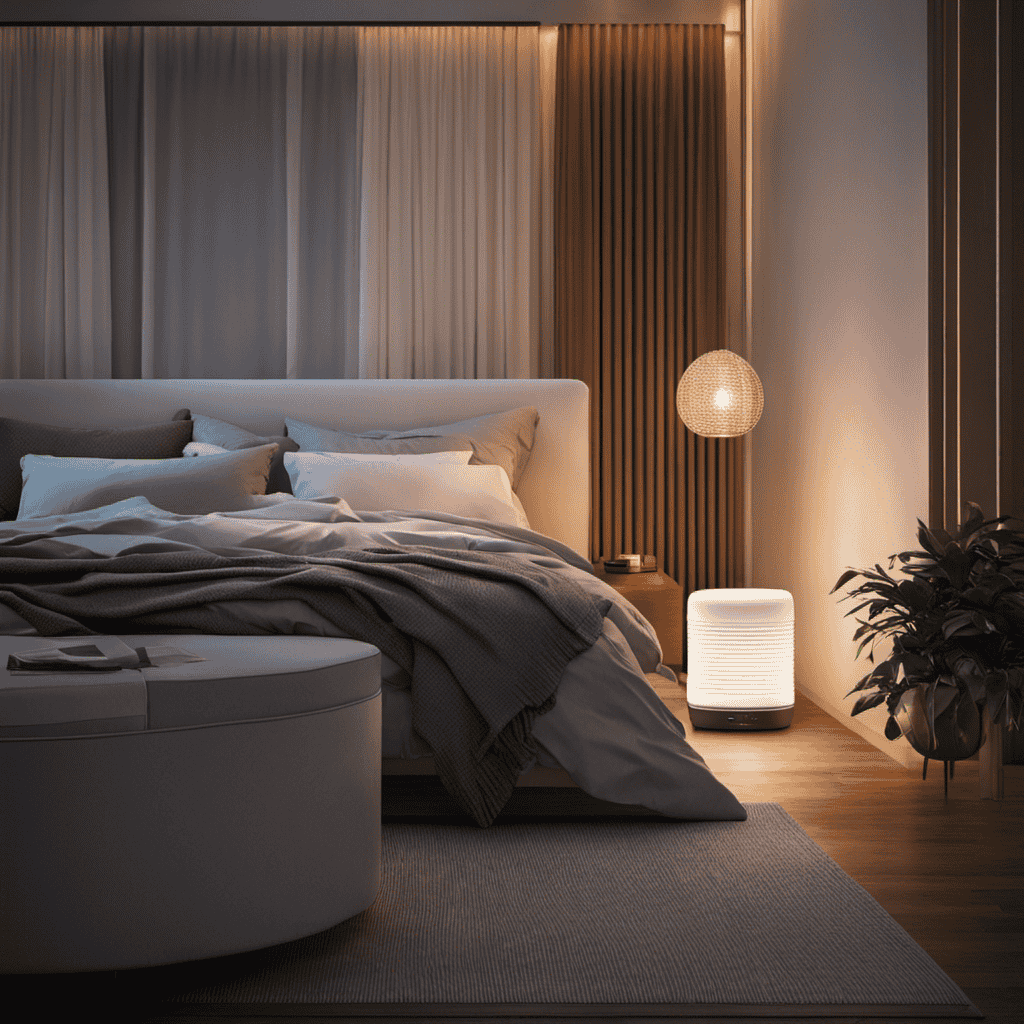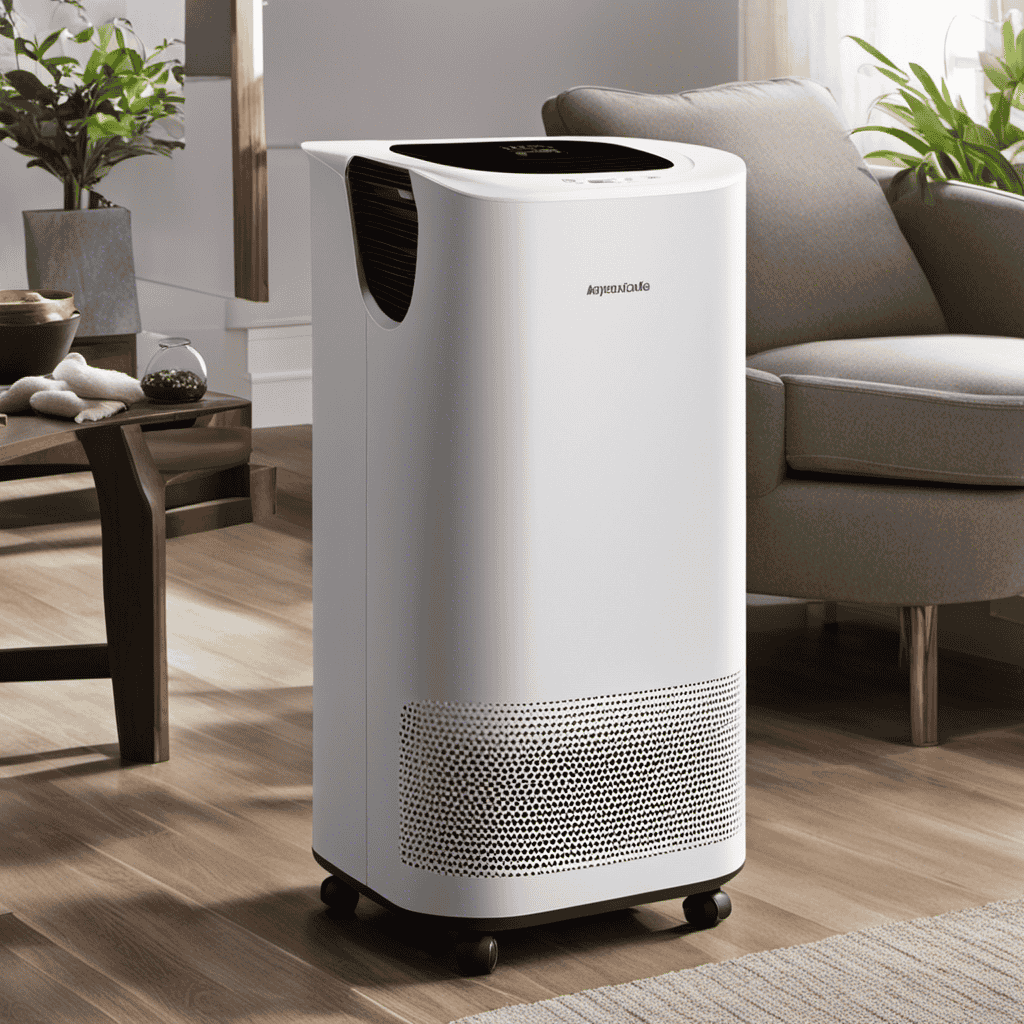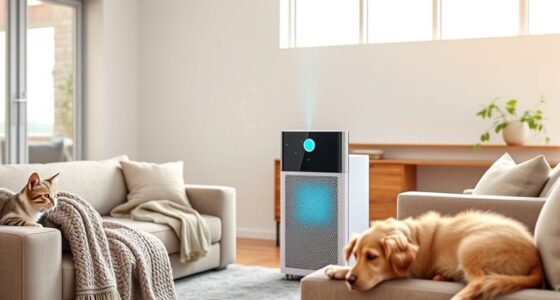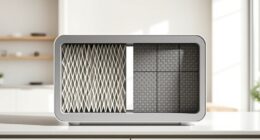I have often pondered about the ideal number of hours to run my air purifier to maintain the best air quality in my home. This is a common question among many people, especially with the growing worries about indoor air pollution.
In this article, we’ll delve into the factors that determine the ideal run time for an air purifier, helping you strike the perfect balance between efficiency and effectiveness.
So, let’s find out just how long we should keep those purifiers humming to breathe cleaner, healthier air.
Key Takeaways
- The size of the room and the air quality in your area are important factors to consider when determining the optimal running time for an air purifier.
- It is recommended to run an air purifier for at least 8 hours a day for clean air, but extended usage can provide additional benefits, especially in high pollution areas or for individuals with allergies or respiratory issues.
- Factors such as room size, air pollution level, and the specific model of the air purifier can influence the recommended duration of operation, so it is important to check the manufacturer’s guidelines.
- Customizing the operating hours of an air purifier based on room size, pollution levels, and individual needs can optimize its performance, increase its lifespan, and reduce energy consumption.
Determining the Optimal Run Time for Your Air Purifier
To figure out the optimal run time for your air purifier, you should consider factors such as the size of your room and the air quality in your area.
Setting timers and adjusting purification levels can help ensure that you are maximizing the effectiveness of your air purifier while also conserving energy.
The size of your room is an important factor because it determines the amount of air that needs to be purified. Larger rooms may require longer run times to ensure thorough purification.
Additionally, the air quality in your area can vary, so it’s important to monitor and adjust the purification levels accordingly. If the air quality is poor, you may need to run the air purifier for longer periods of time or increase the purification levels to achieve optimal results.
Factors to Consider When Setting the Hours for Your Air Purifier
When deciding how long to run your air purifier, consider these factors:
-
Room size: The size of the room where the air purifier is placed is an important factor to consider. Larger rooms may require longer running times to effectively purify the air.
-
Air quality: If the air in your home is heavily polluted or if you live in an area with poor outdoor air quality, you may need to run your air purifier for longer periods of time to maintain clean air.
-
Allergies and sensitivities: If you or your family members suffer from allergies or have sensitivities to airborne pollutants, continuous use of the air purifier can provide consistent relief and minimize symptoms.
-
Benefits of continuous use: Running your air purifier continuously can ensure that the air in your home is consistently clean and fresh. Continuous use can help remove allergens, dust, pet dander, and other pollutants, providing a healthier environment for you and your family.
Considering these factors will help you determine the optimal running time for your air purifier and maximize its effectiveness in improving your indoor air quality.
Understanding the Recommended Duration for Air Purifier Usage
Understanding how long to use your air purifier can help you optimize its effectiveness in improving your indoor air quality. The recommended duration for air purifier usage depends on various factors such as the size of the room, the level of air pollution, and the model of the purifier.
Generally, it is recommended to run the air purifier for at least 8 hours a day to maintain clean and healthy air. However, in certain cases, extended usage can provide additional benefits. For example, if you live in an area with high pollution levels or if you suffer from allergies or respiratory issues, running the air purifier for longer periods, such as 24/7, can help provide continuous filtration and alleviate your symptoms.
It is important to check the manufacturer’s guidelines and adjust the duration accordingly for optimal air purification.
Finding the Balance: How Long Should You Run Your Air Purifier
Finding the right balance for running your air purifier depends on factors such as room size, pollution levels, and your individual needs. To maximize the benefits of your air purifier, it’s essential to find the right schedule that suits your specific situation.
Here are some key points to consider:
-
Room Size: Larger rooms may require longer running times to ensure effective air purification. Smaller rooms, on the other hand, may need less time.
-
Pollution Levels: If you live in an area with high pollution levels or have specific indoor pollutants like pet dander or allergens, you may need to run the air purifier for longer periods.
-
Individual Needs: Consider any allergies or respiratory conditions you or your family members may have. Running the air purifier when you are most vulnerable, such as during sleep or when spending extended periods indoors, can be highly beneficial.
-
Experiment and Adjust: Finding the right schedule may require some trial and error. Start with running the air purifier for a few hours and gradually increase or decrease the duration based on the air quality improvement you observe.
Customizing the Operating Hours of Your Air Purifier for Maximum Efficiency
To customize the operating hours of your air purifier for maximum efficiency, it’s important to consider factors such as room size, pollution levels, and individual needs. By adjusting the operating hours, you can optimize the performance of your air purifier while also increasing its lifespan and reducing energy consumption.
When determining the ideal operating hours, start by assessing the size of the room. Larger rooms require longer operating hours to effectively clean the air, while smaller rooms may only need a few hours.
Additionally, consider the pollution levels in your environment. If you live in an area with high pollution, you may need to run the air purifier for longer periods to maintain clean air.
Lastly, take into account your individual needs. If you suffer from allergies or have respiratory issues, running the air purifier for longer periods can provide relief. However, if you only need occasional air purification, you can reduce the operating hours to conserve energy.
Frequently Asked Questions
Can Using an Air Purifier for Longer Hours Improve Its Efficiency in Removing Pollutants?
Using an air purifier overnight can be harmful due to prolonged exposure to ozone. It is recommended to run an air purifier for a few hours a day, depending on the size of the room and the level of pollutants.
Are There Any Specific Health Benefits Associated With Running an Air Purifier for a Longer Duration?
Running an air purifier for longer durations can provide specific health benefits. It can help alleviate allergies by removing allergens from the air and improve respiratory health by reducing pollutants and irritants.
Is It Safe to Run an Air Purifier Continuously Without Turning It Off?
It is safe to run an air purifier continuously without turning it off. However, it is important to consider air purifier maintenance and energy consumption to ensure optimal performance and efficiency.
How Often Should the Filters Be Replaced When Running the Air Purifier for Extended Periods?
I replace my air purifier filters every 6 months to ensure optimal performance. Prolonged use can increase energy consumption, so it’s important to find a balance between clean air and energy efficiency.
Can Running an Air Purifier for Too Many Hours Lead to Any Negative Effects on Indoor Air Quality?
Running an air purifier for too many hours can potentially have negative effects on indoor air quality, such as an increase in electricity consumption and potential risks or hazards associated with continuous operation.
Conclusion
In conclusion, finding the right balance and duration for running your air purifier is crucial for achieving maximum efficiency in purifying the air in your home.
By considering factors such as room size, air quality, and specific needs, you can customize the operating hours to ensure optimal performance.
Just like a well-tuned instrument, your air purifier can create a symphony of clean and fresh air, providing a sanctuary for you and your loved ones.
So, let your air purifier run harmoniously, creating a haven of pure air in your home.

